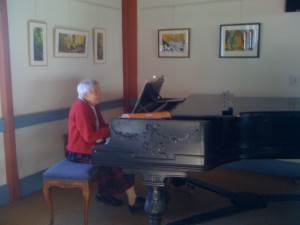Our first day of this, our seventh year of B-Club, was….well…chaotic. There’s really no other word to describe what invariably happens every year on the first day in which the participants in our multi-age after-school club meet up for the first time, start to get to know each other, and try to figure out what to do in this space that isn’t quite like any other they know. I am learning to embrace the chaos, accept my own discomfort with the loss of a sense of control, and trust in the process that will unfold as our group builds something unique together, and reflects on our learning therein. It’s not easy to “let go” of control, but when I can do so, step back and notice and observe, there is always much beauty and order to see beneath the surface of what does invariably feel, well…chaotic.
This year we had seventeen Teacher Education students (our beloved “Grugs”), four undergraduates (equally beloved “Ugs”), three graduate students, forty-two kids, and myself. Twenty-two of the kids were returnees, 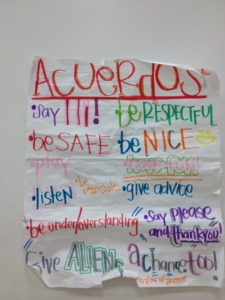 anxiously awaiting the start of the new year of our club, and at least somewhat familiar with our “Acuerdos” and our practices. The other twenty-eight were new, figuring this out along with most of the adults who were there for the first time. There’s a lot to figure out. It can be unsettling. But sitting with that discomfort can lead to new insights. As one Grug wrote in her weekly reflection:
anxiously awaiting the start of the new year of our club, and at least somewhat familiar with our “Acuerdos” and our practices. The other twenty-eight were new, figuring this out along with most of the adults who were there for the first time. There’s a lot to figure out. It can be unsettling. But sitting with that discomfort can lead to new insights. As one Grug wrote in her weekly reflection:
“A classroom management book we use for another class often talks about how stressful it is for children to be in an environment in which they completely lack control or autonomy. I think it is interesting that on Friday, I felt like the roles had been switched; the kids were autonomous and confident, but I felt like I had fallen into a stream of kids, and simply had to move along with the flow of their choices and desires. They know the campus, the club, their peers; I know no names, no buildings, no “rules”, or expectations, and this role reversal made me very uncomfortable. However, I think this discomfort provides great insight to what it feels like to be a child.”
As often happens in schools, our best-laid plans to create some kind of order didn’t quite pan out. We had pre-planned groups of 4-5 child participants with two Grugs. The groups included a veteran B-Clubber and newcomers, older and younger. The idea was to have mixed ages and mixed expertise so that the more “expert” participants could introduce the novices to the school and the Club. But some last minute changes to the list of participants were made by the school, so the groups we had established didn’t work, and we had to improvise.
Welcome to life in schools! Last year on our first day, the fire alarm went off and we all had to exit the room. An article our group will read later this quarter, called “Teaching as Disciplined Improvisation,” speaks to the pedagogical imperative for improvising. Teachers are often forced to go off script. To figure out what to do on the fly. To adapt, shift gears, make do. And to do so with a smile!
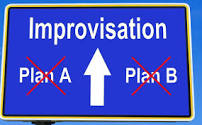 (I did all kinds of improvising during my years teaching at an elementary school not far from the school that now houses B-Club. For example, new students would often appear at my door, sent by the office, unannounced. I had to quickly improvise a desk, materials, a buddy, ways of learning about this child and bringing him or her up to speed and into the community of our classroom. And pretend that this was all part of my plans for the day.)
(I did all kinds of improvising during my years teaching at an elementary school not far from the school that now houses B-Club. For example, new students would often appear at my door, sent by the office, unannounced. I had to quickly improvise a desk, materials, a buddy, ways of learning about this child and bringing him or her up to speed and into the community of our classroom. And pretend that this was all part of my plans for the day.)
Organizing large groups of kids is challenging enough in a classroom setting, where teachers can rely on the standard machinery of schooling (all the things that help to assert “control” over squirrelly children’s bodies): four walls to house us in, chairs aligned in space and anchored to the floor, a whiteboard or chalkboard to stand in front, chalk in hand, posed ready to write names under either a happy or sad face…and the power of the institution backing adult authority, via the threat of sending a child to the principal, or a note home.
In our after-school program we have none of that “repressive apparati” or contextual supports. We also don’t want to “control” in those ways. We want to channel energy in safe, responsible and productive ways. We want kids to take responsibility along with us. We don’t want them to rely on adults to take care of all problems, but work with each other and with us to address any issues that arise. We want to build a community based on mutual respect, and reflect on that building together.
But on the first day it’s always hard. Plus, it’s after 3 pm, and the kids have been sitting on chairs and walking in lines for six hours. Their heads are hurting from thinking thinking thinking all day (as they learn things that are hard for them at that age – even if those things seem easy to adults, who did that learning long ago, and probably in their first language). They’ve spent most of the day listening, being quiet, and keeping their bodies still. At this hour, the kids want (arguably need) to run, jump, dance, and move. And scream! Julia and Maylin told their Grugs that screaming was their favorite thing to do. [We have seen these first graders in their classrooms, and we know they don’t get to scream there. (In fact, Maylin’s teacher told us that she almost never talke in class last year.) We imagine they don’t get to do a lot of screaming at home either. I think about my own “quiet good girl” childhood, and my reflections in my last blog (https://marjoriefaulstichorellana.com/uncategorized/why-do-i-write/) about the power of finding our voices. Perhaps B-Club gives a little room for these girls to find theirs, and to experiment with different ways of using them.]
(I stopped by the school yesterday to take photos of the kids in preparation for Friday’s club. I asked each to record on my voice recorder what they would like others to know about them. Maylin and Julia said, “That we like to scream!” and indeed, they SCREAMED into my voice recorder. The cool thing is that I could show them the visual image of their screams – charted on the Ap as sound waves – and how it shifted when they spoke in normal voices, or whispers.)
So on Friday I listened to the screams, but also laughter. I watched as some kids threw their bodies on the ground in wild abandon (but with perfect control – no safety issues here). They slid on the big wooden floor of the MPR in a way that made an old lady like me feel, well….nervous. I tried to just notice my own discomfort and ask the questions we always ask before deciding if we should intervene with our adult authority: “Is this safe? respectful? responsible?” If it’s not a matter of safety or disrespect, can I just notice how it makes me feel, and not feel compelled to stop it? (I’m so used to controlling my own every move. What would it take for me to feel that kind of freedom, to let myself loose in that way?) Note: If it DOES feel like a matter of safety or respect, to ANYONE, we DO encourage ANYONE (kids or Ugs alike) to speak up, or intervene.
Yet even on this first day of confusion and, well…chaos…some magic began to emerge. I watched as a group of about six children of mixed ages forms around two young men who are learning to be teachers in our program. These Grugs skillfully channelled what looked at first like frenetic energy into a game of four square. Kids saw the fun and joined in. The group expanded, and the smiles grew bigger, the laughter louder.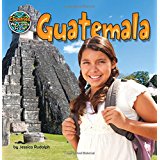
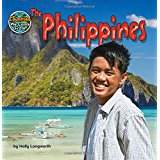

Another group of children discovered some books I had set out on a table: brightly colored with images of “countries we are from:” El Salvador, Guatemala, India, the Philippines, Korea, China. “Guatemala!” a new girl to our program exclaimed. “My mom was born there.” The group plopped down on the hard wood floor of the MPR, books in hand. A Grug noticed, and joined in, using the books as a way to learn about kids’ lives. 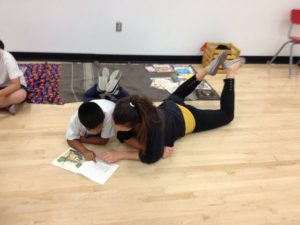 We learned that one of our new participants is from India AND Cuba!
We learned that one of our new participants is from India AND Cuba!
The first “letters of love” appeared as well, as kids found the stationery I had set out, and wrote impromptu letters to their new Grugs. They expressed love openly in ways that adults would never dare. “I love you! You are so butiful” Sarita wrote to her new UCLA mentor friend.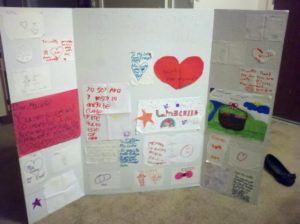 Such expressions of affection – or “letters of love” – happen every year, without prompting.
Such expressions of affection – or “letters of love” – happen every year, without prompting.
In their reflections this week, several of the Grugs commented on the “chaos” – some noting their discomfort, but also commenting on how beautiful it was to see children moving freely, playing happily, not confined or “controlled.” Two made explicit comparisons to the classrooms they are working in in the mornings. They noted that there, kids often rely on the teachers to enforce control. They noted how much kids tattled on each other in school. In contrast, they saw the kids at B-Club cooperating, not turning against each other. One Grug wrote this:
“I was amazed not only by the kids’ incredible energy levels, but also by how good they were at managing independently. In my first grade classroom, every other minute a student comes up to me trying to tattle, asking for help managing a social problem, complaining about something a peer did…in B-Club, I did not see any problems like this come up. Despite all of the chaos, nobody complained about getting injured or being wronged. I thought this was an amazing testament to children’s’ ability to self regulate, and perhaps conversely about their reluctance to self regulate when they expect adults to “solve” problems for them. They happily ran, read, created art, played games, etc.”
Another connected with the best memories from her own childhood:
“I liked how there was no instruction about where the kids should go if they wanted certain things. Instead, supplies were left out in various places, and the kids figured out what they wanted to do with supplies on their own. It reminded me of countless summers I had growing up outside with my neighborhood friends. We were not enrolled in summer school or summer camp. Instead, we played in front yards, and on our street, and made up games with the things we had in our houses. These were some of the best times of my life, and a huge part of it was that there were no adults involved! Instead, we had complete creative control over our playtime, and it fostered lifelong relationships and a kind of creative freedom I’ve rarely experienced since growing up. B-Club felt like this.”
A third said it helped her to think about how schools could be, if we could completely re-imagine them.
***
When it was time to clean up part of me panicked. How to gain the group’s attention? I felt responsibility for doing something, aware that the new Grugs undoubtedly expected someone – me? – to take charge.
We have long learned not to try flicking the light switches in the room, something teachers do in classrooms all the time. With a group this big in a room this dark, that will only elicit panic and pandemonium. To clap for attention (another favorite teacher trick), or foolishly ask for “one two three, eyes on me” was hopeless, with all the sounds bouncing around this echoic room. What would “work” to draw people out of their small group activities, and bring us together as a group?
I tried stomping my feet instead, in a steady rhythm. The Grugs quickly joined in, and helped channel all the energy in these nearly 100 human bodies into a beautiful rhythmic stomping in a circle in the center of the room. First grader Carey (a boy whom we learned often gets in trouble for not sitting still in school), danced with wild abandon into the center, swaying his body with the rhythm of the group, a huge smile spreading from ear to ear. It was still not easy to lead the group in any “controlled,” adult-directed verbal conversation, but you could just see how happy everyone was. We were learning to connect with each other and to experience a sense of group – together, without a single strong-armed or loud-voiced leader, and without a whole lot of words.
Seeing these moments of (relative) order emerge out of chaos – and perhaps more importantly, seeing the unbridled enthusiasm and sheer joy that the kids evince in moments that may feel chaotic to me – gives me hope for the weeks to come. Every year, I have watched magic happen in this space. I have seen how much the kids LOVE being here, and how much learning can happen while having fun.
The mention of that magic gives me an excuse to repost a blog from two years ago (one of the many that I lost). I’m adding that below, as I eagerly await to see what new magic will emerge this year, and to share a bit more of it here.
Older blog posts about our work at B-Club:
Sharing the magic
MAY 5, 2015 / 5 COMMENTS
Every week at B-Club a little bit of magic seems to happen. But how can I put that magic into words to share with you, my readers? How can I convey the feeling-tone of our learning community, and suggest what is possible in educational contexts? Images may help to convey the magic, but I want to be careful only to use photos that obscure kids’ images. With words, I can provide some “rich, thick description,” as ethnographers like to say; we can also use words to analyze what goes on beneath the surface of the sometimes-chaotic fun at B-Club. But there’s nothing like immersing in the context to experience what a pedagogy of heart and mind looks and feels like.
The pedagogical approach we take at B-Club is grounded in the core belief that learning doesn’t just happen in the heads of individuals. It isn’t disconnected from our emotions, bodies or spirits. And it doesn’t have to be painful, or difficult. It can be joyous. It can be fun. Learning comes along for the ride when we put our hearts into what we do. We use kids’ natural love for play, and for connecting with people as the driving force for learning at B-Club: love for the word, the world, the things we were learning about, and the people we were learning with and for.
For the last five weeks, my Teacher Education team has brought a terrific set of new activities to B-Club. These emerged from kids’ interests and invited them into new possibilities. They also connect with the themes that these pre-service teachers are exploring for their own inquiries into teaching and learning: around gender, language, imagination, friendship, technology and voice. They elicit “data” naturally: by engaging with kids in activities, and listening and watching closely to what transpires. This requires being flexible and adaptable (transcultural competencies, as I discussed in a prior blog, and skills that teachers deploy every day) as they follow kids’ leads, builds on their interests, scaffold and support and open up zones of development for everyone involved. They bring inspiration from the training the team has received this year as well from a fantastic organization called Inner City Arts (http://www.inner-cityarts.org/).
Maribeth, Marisol and Leslie met with a group of kids to plan a blog and to write digital stories with photos wearing dress-up clothes. They took a striking pictures of Club participants in different poses against a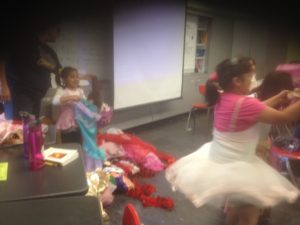 clear white background. Marisol told us later that she then left the room briefly, and when she came back she found that the room had been transformed into a theatre. The kids were performing under dimmed lights. Dolphin and Cutie Pie (pseudonyms) were dancing around the large wooden floor. Alexia was filming, holding an IPad camera as steady as she could and announcing with a big smile: “I’m trying my best!”
clear white background. Marisol told us later that she then left the room briefly, and when she came back she found that the room had been transformed into a theatre. The kids were performing under dimmed lights. Dolphin and Cutie Pie (pseudonyms) were dancing around the large wooden floor. Alexia was filming, holding an IPad camera as steady as she could and announcing with a big smile: “I’m trying my best!”
Meanwhile, Sydney, Maggie, Cristina and Arianna were outside with a group of kids in their “Explorer’s Club.” Sporting butterfly nets, binoculars, magnifying lenses and notepads, they were out in an large open field on the school lot. (Ironically, this is one of the only open spaces in this community – and a safe space for kids to explore, unlike some of the local parks – and yet usually the fields are empty after school. Where in this urban community do kids get to connect with the land and freely explore local ecosystems?)
In our debrief at the end of the day last week, Sydney noted that every time they have gone out to that field they have discovered and experienced new things. This week they explored the far corner, where a few trees grew in some tall grass. This was an approximately 8 by 15 foot area they had never been in before. One student, Roberto (a pseudonym) exclaimed excitedly, “Miss, it’s like we’re in a jungle over here!”
The kids found and piled up pine cones, discovered and tasted honeysuckle, and pretended to be explorers who got lost in this “jungle.” They wrote in their notebook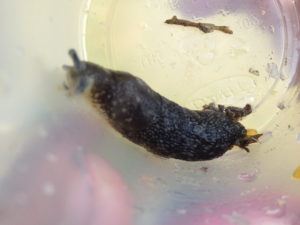 s, looked at slugs, ladybugs and rolly-pollies under magnifying glasses and googled to learn the scientific name for these little creatures. (Did you know that rollie pollies are Armadillidiidae?)
s, looked at slugs, ladybugs and rolly-pollies under magnifying glasses and googled to learn the scientific name for these little creatures. (Did you know that rollie pollies are Armadillidiidae?)
Sydney reflected later in a fieldnote: They were intently looking at everything. I’m not sure if they all live in apartments or if they have backyards, but this experience with them getting so excited about the plants and animals made me realize how important it is to get students outside in nature. I don’t think most kids who live in urban areas get this experience very much and it’s a necessary part of learning and exploring the world. I hope to be able to include more experiences like this with my students in the years to come.
Sydney noted that when they went into the classroom for our afternoon wrap-up, she had never seen them so engaged in their interactive journals. We recalled how some of the kids resisted writing in these journals at the beginning of the year, and how excited they were to write about what they had explored that day. She noted, “That makes me think about how in the classroom how can we have authentic experiences in the classroom that makes them want to do ‘work.’”
Later Ronaldo and Byron compared notes from the day. Byron said, “We made a movie!” Ronaldo retorted, “Well we got to taste honeysuckle.” Ronaldo added, “This was like the best day ever in B-Club!”
Meanwhile, Sarah and Max worked with some kids to write a song about B-Club. Sarah explained in our debrief: “It was all about how we help each other how, how we get to play, how the Grugs (our affectionate name for the grad students) are the best, how B-Club is the BEST place in the world.” She did note that one student, Ronaldo, wasn’t really into the song, which made her realize how hard it will be to respond to the interests and needs of all students in her future classrooms. But Ronaldo got excited again once they agreed to insert the song into a movie they were making about B-Club. Together, Sarah and Max are thinking about how classrooms can provide structure but also give kids freedom to explore and to let things morph and unfold – what R. Keith Sawyer calls “disciplined improvisation.”
There is so much more I could say about what transpires in our magical club world – the learning that is embedded painlessly in the fun, as kids and Grugs plan and execute their visions together, using language in complex and dynamic ways, and integrating multi-modal literacies with explorations of theatre, art, science and math. As we wrap up B-Club for the year, I will have time this summer to dig beneath the surface of the fun, and will try to share more of that with readers.
 This week I’d like to reflect on a “discussion” of sorts that we held at B-Club two weeks ago, about our “Acuerdos,” or agreements for participation in our club. I’ll share two approaches we took to grounding ourselves in these agreements for the new year. The two approaches illuminate differences between a “teacher-directed” setting and a true community of learners. Along the way I will have a few things to say as well about another study in contrasts: the core values of our club, and our ways of enacting them, and the ones that seem to be reining in this country at this time.
This week I’d like to reflect on a “discussion” of sorts that we held at B-Club two weeks ago, about our “Acuerdos,” or agreements for participation in our club. I’ll share two approaches we took to grounding ourselves in these agreements for the new year. The two approaches illuminate differences between a “teacher-directed” setting and a true community of learners. Along the way I will have a few things to say as well about another study in contrasts: the core values of our club, and our ways of enacting them, and the ones that seem to be reining in this country at this time. There is no classroom large enough to hold us, and the MPR just isn’t conducive to large group discussions given its sound quality and the temptations of that big wooden floor.(There are parallels to the nation: it certainly is not an easy task for citizens to come together in any genuine dialogue or “town hall.”)
There is no classroom large enough to hold us, and the MPR just isn’t conducive to large group discussions given its sound quality and the temptations of that big wooden floor.(There are parallels to the nation: it certainly is not an easy task for citizens to come together in any genuine dialogue or “town hall.”) So what did we do? We defaulted to the familiar classroom script. I and my team walked to the “front” of the room. The students sat in desks. They self-segregated by age and gender. The GRUGs sat at the back of the room. Everyone faced forward and looked for someone to tell them what to do.
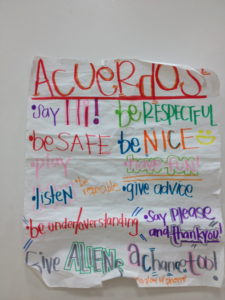 that we had established in the past and asked for volunteers to read the list. I asked for “thumbs up” or “thumbs down” indicating agreement or disagreement with each one. Like good students, everyone gave them all a thumbs up. Of course, this was all pro-forma. Did it really mean they knew or understood or agreed with these agreements?
that we had established in the past and asked for volunteers to read the list. I asked for “thumbs up” or “thumbs down” indicating agreement or disagreement with each one. Like good students, everyone gave them all a thumbs up. Of course, this was all pro-forma. Did it really mean they knew or understood or agreed with these agreements?inating them so much more than the boring adult-led talk?

hers to spread B-Club’s values throughout the world. And then hold ourselves collectively responsible for living up to our ideals.
 is similarly credited with establishing an approach to liberatory pedagogies, another foundation for UCLA’s Teacher Education program.
is similarly credited with establishing an approach to liberatory pedagogies, another foundation for UCLA’s Teacher Education program.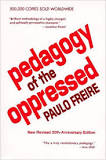

 might create the conditions for the desire to write to emerge.
might create the conditions for the desire to write to emerge. Bilingual kids are attuned to language. They read subtle social cues. They know when translation is needed. And they step in to offer it. Eva was far more attuned than I to the fact that Amelie needed translation. I was not nearly as good at reading the social cues (nor at remembering which kids read Spanish and which ones do not).
Bilingual kids are attuned to language. They read subtle social cues. They know when translation is needed. And they step in to offer it. Eva was far more attuned than I to the fact that Amelie needed translation. I was not nearly as good at reading the social cues (nor at remembering which kids read Spanish and which ones do not). a psychologist at the University of California, Santa Cruz, has contrasted these typical ways of socializing children in U.S. schools (and to a large extent, in middle class U.S. homes), with the ways Mayan children participate in community endeavors in Guatemala. (See her TED talk:
a psychologist at the University of California, Santa Cruz, has contrasted these typical ways of socializing children in U.S. schools (and to a large extent, in middle class U.S. homes), with the ways Mayan children participate in community endeavors in Guatemala. (See her TED talk:  anxiously awaiting the start of the new year of our club, and at least somewhat familiar with our “Acuerdos” and our practices. The other twenty-eight were new, figuring this out along with most of the adults who were there for the first time. There’s a lot to figure out. It can be unsettling. But sitting with that discomfort can lead to new insights. As one Grug wrote in her weekly reflection:
anxiously awaiting the start of the new year of our club, and at least somewhat familiar with our “Acuerdos” and our practices. The other twenty-eight were new, figuring this out along with most of the adults who were there for the first time. There’s a lot to figure out. It can be unsettling. But sitting with that discomfort can lead to new insights. As one Grug wrote in her weekly reflection: (I did all kinds of improvising during my years teaching at an elementary school not far from the school that now houses B-Club. For example, new students would often appear at my door, sent by the office, unannounced. I had to quickly improvise a desk, materials, a buddy, ways of learning about this child and bringing him or her up to speed and into the community of our classroom. And pretend that this was all part of my plans for the day.)
(I did all kinds of improvising during my years teaching at an elementary school not far from the school that now houses B-Club. For example, new students would often appear at my door, sent by the office, unannounced. I had to quickly improvise a desk, materials, a buddy, ways of learning about this child and bringing him or her up to speed and into the community of our classroom. And pretend that this was all part of my plans for the day.)


 We learned that one of our new participants is from India AND Cuba!
We learned that one of our new participants is from India AND Cuba! Such expressions of affection – or “letters of love” – happen every year, without prompting.
Such expressions of affection – or “letters of love” – happen every year, without prompting. clear white background. Marisol told us later that she then left the room briefly, and when she came back she found that the room had been transformed into a theatre. The kids were performing under dimmed lights. Dolphin and Cutie Pie (pseudonyms) were dancing around the large wooden floor. Alexia was filming, holding an IPad camera as steady as she could and announcing with a big smile: “I’m trying my best!”
clear white background. Marisol told us later that she then left the room briefly, and when she came back she found that the room had been transformed into a theatre. The kids were performing under dimmed lights. Dolphin and Cutie Pie (pseudonyms) were dancing around the large wooden floor. Alexia was filming, holding an IPad camera as steady as she could and announcing with a big smile: “I’m trying my best!” s, looked at slugs, ladybugs and rolly-pollies under magnifying glasses and googled to learn the scientific name for these little creatures. (Did you know that rollie pollies are Armadillidiidae?)
s, looked at slugs, ladybugs and rolly-pollies under magnifying glasses and googled to learn the scientific name for these little creatures. (Did you know that rollie pollies are Armadillidiidae?)
 when people are being shot by police at traffic stops, wars are raging, madmen are terrorizing people all around the world, refugees are drowning, the climate is going to hell, and income inequality, racism and xenophobia are at an all-time high…. What can I say in the face of all this? What difference can my words possibly make?
when people are being shot by police at traffic stops, wars are raging, madmen are terrorizing people all around the world, refugees are drowning, the climate is going to hell, and income inequality, racism and xenophobia are at an all-time high…. What can I say in the face of all this? What difference can my words possibly make?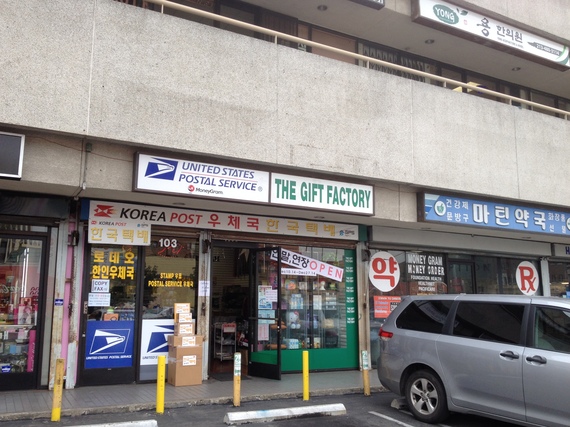
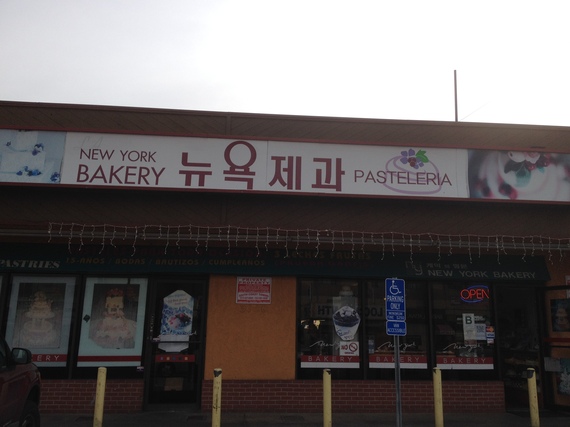

 (https://centerx.gseis.ucla.edu/teacher-education), much attention goes to countering “deficit discourses” about students from non-dominant cultural groups. We ask pre-service teachers to identify the cultural competencies that all children bring to school from their everyday lives. An assets-based perspective may help us to see the print that abounds in urban communities as a resource, as I noted in my last two blogs. It orients us to hear multi-lingualism as wealth, not a limitation. It points us to possibilities and potentialities, not problems.
(https://centerx.gseis.ucla.edu/teacher-education), much attention goes to countering “deficit discourses” about students from non-dominant cultural groups. We ask pre-service teachers to identify the cultural competencies that all children bring to school from their everyday lives. An assets-based perspective may help us to see the print that abounds in urban communities as a resource, as I noted in my last two blogs. It orients us to hear multi-lingualism as wealth, not a limitation. It points us to possibilities and potentialities, not problems.
 brates “flawed beauty.” (See
brates “flawed beauty.” (See 